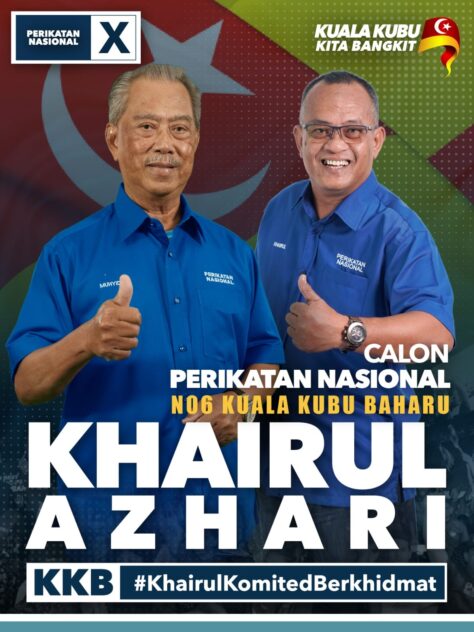By Yamin Vong
WITH global aviation in a tailspin, Malaysia will finally have to make some hard choices.
In the new normal imposed by the Covid-19 pandemic and a global economic recession never seen before since the Great Depression of 1930, the new government’s mettle will be tested by how it treats Malaysia Airlines Group Bhd (MAB).
There were three options on the table for MAB before the pandemic: sell to a foreign airline, sell to a non-foreign airline (AirAsia Group Bhd) and sell to a private non-airline entity.
Now in the first rush of the pandemic, the options are probably down to two: AirAsia and a non-airline Special Purpose Vehicle (SPV) called Golden Skies.
“A merger between AirAsia and MAB will help streamline Malaysia’s aviation industry. Typically, when industries get hit by a drop in demand, mergers are normal,” said Alvin Vong, CEO of EquitiesTracker Holdings Bhd.
“However, there are advantages and disadvantages of a merged company and the recovery period of the industry is a big unknown.
“If the Malaysian government gives a soft loan to AirAsia, there might be a condition that the merger will come with certain conditions such as retention of a percentage of the workforce.
“Before the Covid-19 crisis, AirAsia was in a stronger position to negotiate, however Covid-19 has grounded airlines around the world and all of them are grappling to stay in the air. A sum of US$25 bil was granted to American airlines and part of the condition is no layoffs before October.
“There are currently no nationalised airlines in the US, which is a developed market, to give an idea of what is likely to happen. So an all-private merged airline could be a move in the right direction.
“An advantage to AirAsia will be landing rights that MAB already has, and clarity on the market segmentation, that is AirAsia serves short-haul and low-cost while MAB could serve the premium segment,” Vong said.
The pandemic is a game changer and the government doesn’t have the resources to try to save everything, said a retired banker who didn’t want to be quoted.
“Malaysia Airlines has been a problem since Tan Sri Tajudin Ramli took over a 32% stake in 1994. There are many people who are very attached to MAB and we have to ask the people if it really benefits the country to have a national flagship.
“This merger was tried before and it didn’t happen. It won’t be easy to do it again. Now, AirAsia is also in a situation and to merge two airlines with problems, it might be worse,” he said.
Former Malaysia Airlines staff were still sentimental over the old days.
“Eventually, the government will have to give up Malaysia Airlines to AirAsia in this situation ,” said Captain (Rtd) Peter Lui, a retired Boeing 747 captain for Malaysia Airlines.
“Unless there is somebody who will come up with the risk capital,” he said, commenting on the Malaysia Airlines buy-out proposal by Special Purpose Vehicle, Golden Skies Venture and the suggestion to merge the two airlines by International Trade and Industry Minister Datuk Seri Mohamed Azmin Ali.
“But if some Special Purpose Venture capital comes up with the money to take over MAB, their managers will probably make it work just as SIA is a successful flag-carrier.
“If there is a choice, of course having two airlines for Malaysia is better.
“There should be open competition. Let the fittest win — hopefully we have both AirAsia and Malaysia Airlines becoming world champions. Open Skies means it’s not a zero-sum game.
“Competition is better for us as passengers and as taxpayers. Assuming that both operate on a level playing field and without government subsidy, the competition will give us passengers more choice, keep both operators on their toes so that the customer is king.
“The government can also earn more income from two profitable companies and channel more resources to the poor and those who are newly retrenched because of the recession and contraction in world trade,” said Lui, 75.
He joined MAS in 1972, the very year that MAS and SIA were formed by the splitting up of Malaysia Singapore Airline (MSA).
A former MAS vice-president of resources, Ariffin Ismail, said Malaysia had a market for a full-service carrier as was observed by the number of passengers that took SIA or Emirates or any of the full-service carriers serving Kuala Lumpur to Australia, for example.
“There are lessons to be learnt from Garuda and Philippine Airlines. Both are national carriers and Garuda has successfully made it out of the bad patch it went through in the 1990s. Philippine Airlines was government-owned but taken over by the private sector and still holding its own.
“One of SIA’s advantages is that the government does not meddle with the running of the airline,” said Ariffin.
In 2012, MAS was ranked 12th amongst airlines by Skytrax. Currently, Malaysia Airlines is ranked 34th. Singapore Airlines was ranked third in 2012, and second at present. Even low-cost carriers are being ranked higher than Malaysia Airlines.
Golden Skies Ventures SPV said it has offered a capital injection of RM11 bil and to assume the airline’s full outstanding Islamic bonds or sukuk, its CEO Shahril Lamin was quoted as saying last year in a report in The Edge.
The GSV members include corporate lawyer Shahril Lamin; former Performance Management and Delivery Unit’s anti-corruption director Ravindran Devagunam; economist Dr Puvanesvaran Sanjivee; former MAS vice-president of engineering Sitham Nadarajah and Datuk Rashid Khan, former commercial director of MAS.
In 2013, MAS posted a revenue of RM15.1 bil while AirAsia’s revenue was RM5.1 bil for a combined total of RM19.7 bil. In 2018, MAB group revenue was RM8.7 bil while AirAsia’s was RM10.6 bil. Their combined revenue was RM19.4 bil.
According to the World Bank database, Malaysia’s nominal GDP rose from RM1.02 tril to RM1.45 tril during this period. At the same time, global air travel increased from US$707 bil in 2013 to US$812 bil in 2018, a rise of 14.7%. MAB’s revenue has been declining when our nominal GDP has been rising.
Comparatively, in 2018, Singapore Airlines posted a turnover of S$15.8 bil (RM49.7 bil) for a profit of S$937 (RM2.9 bil). Granted that 2014 was an unfortunate year for MAS, the inability of the subsequent MAB leadership to arrest the decline of revenue by 40% between 2013 and 2018 reinforces the trend of chronic losses that forces a sale of MAB when the country has to choose where to allocate its scarce resources. — April 24, 2020










